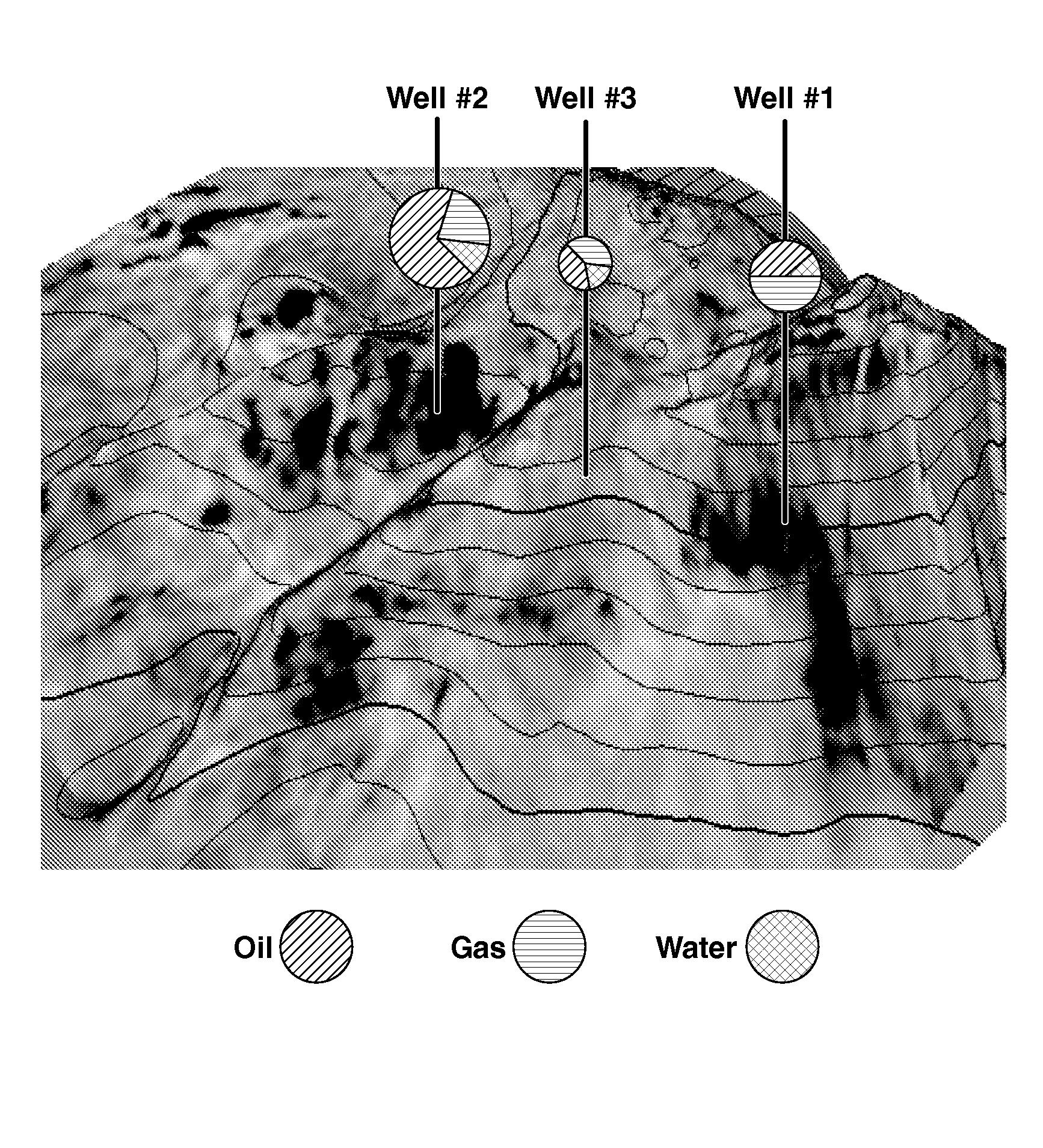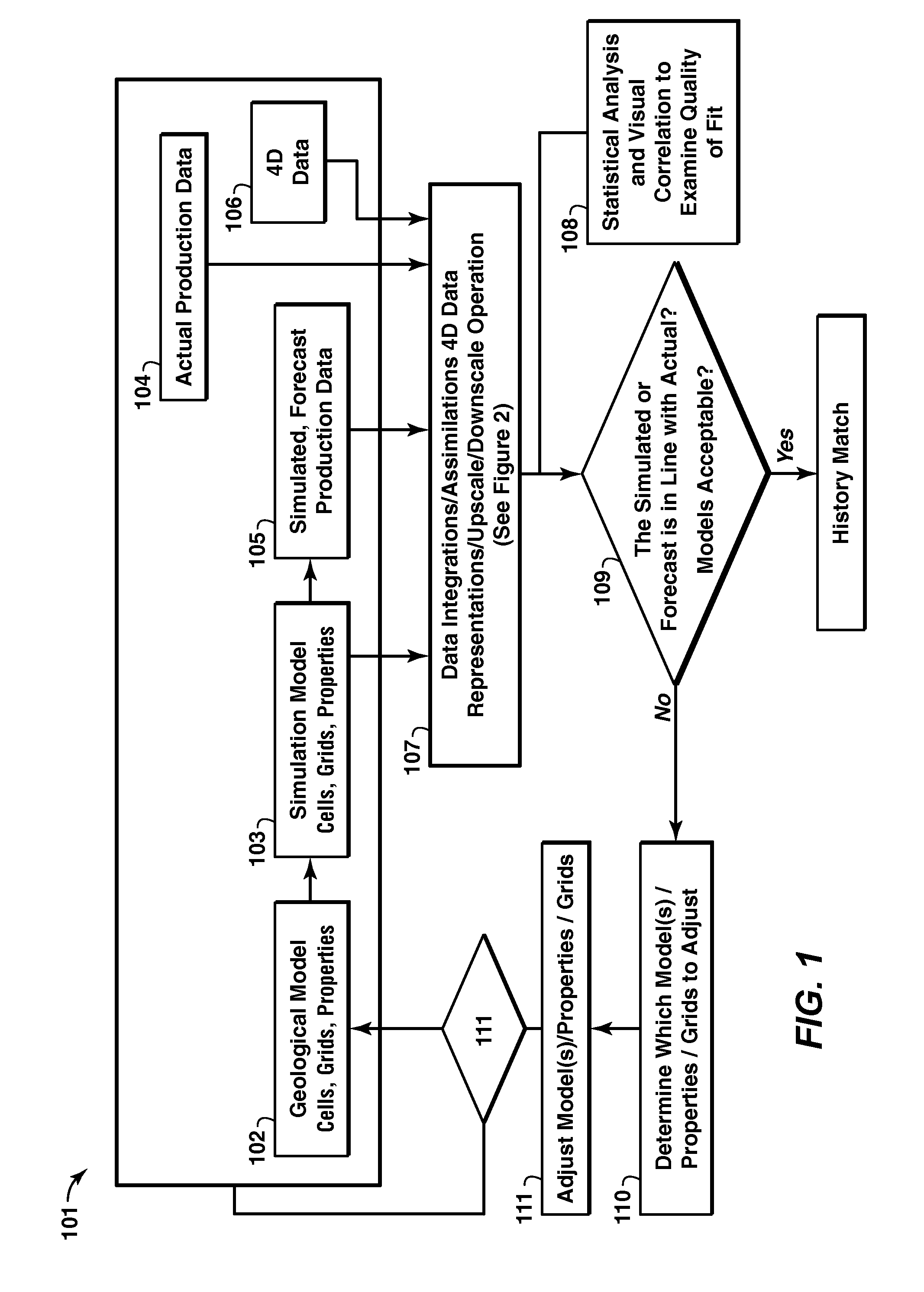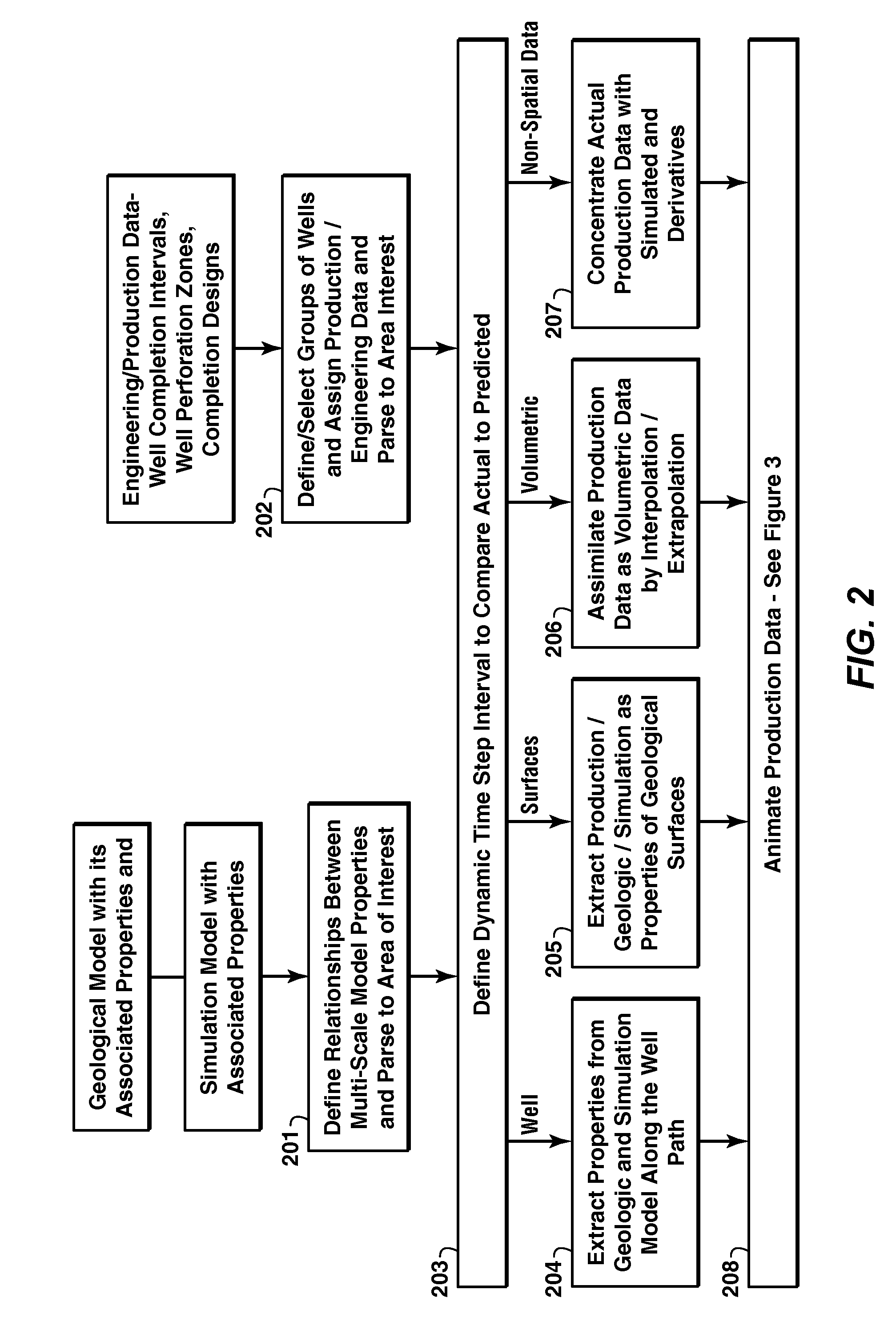Iterative Reservoir Surveillance
a technology of reservoirs and monitoring systems, applied in the field of oil and gas production, can solve the problems of limited ability to spatially represent geologic and engineering production data in 3d, lack of ability to interact with 2d plots, long production life, etc., and achieve the effect of reducing differences
- Summary
- Abstract
- Description
- Claims
- Application Information
AI Technical Summary
Benefits of technology
Problems solved by technology
Method used
Image
Examples
example
[0072]The following is an example of how the invention may be implemented, with some types of data displays shown. A three-dimensional representation of the subsurface is constructed, the 3D Earth Model, which represents the field of interest and surrounding area. Preferably, the 3D Earth Model is the most comprehensive sub-surface understanding of the field of interest and includes all data, at multiple scales of investigation that contributed to this understanding. The 3D Earth Model is designed to be the frame and context in which temporal data is to be displayed, animated and analyzed. As discussed above, FIG. 1 is a flow chart of a preferred embodiment of the Iterative Reservoir Surveillance process, i.e., the present inventive method; however the steps enumerated below in the description of the example refer to the more detailed 26-step embodiment of the invention discussed above. The 3D Earth Model representation could include one or more potential reservoirs and their associ...
PUM
 Login to View More
Login to View More Abstract
Description
Claims
Application Information
 Login to View More
Login to View More - R&D
- Intellectual Property
- Life Sciences
- Materials
- Tech Scout
- Unparalleled Data Quality
- Higher Quality Content
- 60% Fewer Hallucinations
Browse by: Latest US Patents, China's latest patents, Technical Efficacy Thesaurus, Application Domain, Technology Topic, Popular Technical Reports.
© 2025 PatSnap. All rights reserved.Legal|Privacy policy|Modern Slavery Act Transparency Statement|Sitemap|About US| Contact US: help@patsnap.com



